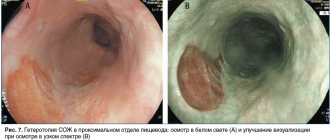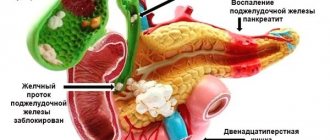BASHKIR STATE MEDICAL
UNIVERSITY
DEPARTMENT OF FACULTY THERAPY
Head Department Doctor of Medical Sciences, Professor G.H. Mirsaeva
Teacher: Doctor of Medical Sciences Professor Galieva Guzel Akhmetovna
Clinical diagnosis:
Chronic non-atrophic (erosive) antral gastritis associated with HP (++) exacerbation stage.
Complications: no
Concomitant diseases: no
Curator – 4th year student
L-413a group of the medical faculty
Khudzhaev Akmal Boynazarovich
Supervision time from March 17 to March 24, 2022
Patient's complaints
Main complaint:
- For aching pain in the epigastrium and left hypochondrium that occurs after eating (if the diet is violated) at any time of the day, without irradiation, accompanied by the urge to defecate. Side effects:
- A feeling of heaviness and discomfort in the upper third of the abdomen, heartburn, belching with a sour taste at different times of the day.
- For episodic rises in blood pressure with maximum figures of up to 160/100 mm. rt. Art. (adapted to 140/80), accompanied by headache, flashing spots before the eyes.
- Frequent, prolonged attacks of palpitations, accompanied by weakness, shortness of breath, dizziness, discomfort in the left half of the chest.
- Feeling of cardiac arrest and irregularities in the heart area.
- Periodic aching, pressing pain in the chest, accompanied by a feeling of lack of air, occurring during physical activity, relieved by taking nitroglycerin.
— For periodic aching pain in the hip joint that occurs at rest and during physical activity at any time of the day, without irradiation.
Introduction
Effective supervision of a patient with chronic atrophic gastritis in real clinical practice is a difficult task for the clinician.
First of all, this is due to the fact that structural changes in the gastric mucosa do not determine the presence, severity and type of dyspepsia syndrome, which means that the clinician does not have reliable clinical stigmas that allow him to suspect the presence of atrophy of the gastric mucosa already at the examination stage. Another difficulty should be recognized as the need for interdisciplinary cooperation with an endoscopist and a morphologist - the very possibility of making a diagnosis of “chronic atrophic gastritis (CAG)” depends on them. Finally, the choice of the most effective patient management strategy determines both the risk of developing gastric cancer and the likelihood of its detection in the early stages. This publication was prepared with the aim of systematizing the available data on modern approaches to the management of patients with CAH.
Chronic atrophic gastritis is the final stage of the inflammatory process, the key characteristic of which is the loss of glands with their replacement by fibrous tissue or intestinal metaplasia. These characteristics highlight structural changes in the gastric mucosa in the cascade of adverse events from inflammation to cancer and make the identification of CAG extremely relevant in the aspect of cancer prevention. The histopathological cascade of gastric carcinogenesis, also called the P. Correa cascade, after the pathologist who first described it back in 1975, is a stepwise process: from normal gastric epithelium to chronic non-atrophic gastritis, chronic atrophic gastritis, intestinal metaplasia, dysplasia and cancer [ 1]. It should be noted that the process of changes from normal mucous membrane to inflammation and cancer is general biological and does not depend on the causative factor (for example, infectious or autoimmune gastritis). This means that it is extremely important for the clinician not only to establish the etiological factor and, if possible (in the case of Helicobacter pylori
) eliminate it, but also determine the individual risk of cancer formation. Today we can say with confidence that there is a so-called “point of no return” in the form of CAH with intestinal metaplasia, when even if the etiological factor is eliminated, the risk of progression of inflammatory changes in the gastric mucosa with disruption of cellular renewal processes remains, which ultimately makes the most effective strategy carrying out preventive measures before the formation of atrophy (Fig. 1) [2].
Approaches to the diagnosis of chronic atrophic gastritis
There are two main methodological approaches for the diagnosis of CAH, namely serological studies using markers of gastric function (pepsinogen I, the ratio of pepsinogen I and pepsinogen II, additionally stimulated and basal gastrin-17, IgG antibodies to H. pylori
) or invasive studies requiring histological analysis of biopsies taken during esophagogastroduodenoscopy, which is the “gold standard” for making a diagnosis. In accordance with domestic clinical recommendations, all patients with clinical manifestations of dyspepsia syndrome require an endoscopic examination of the upper digestive tract followed by a morphological assessment of gastrobiopsy samples [3].
Therefore, already at the stage of initial contact with the patient, it is important to find out whether he has dyspepsia syndrome, and if so, then clarify its nature, evaluate the accompanying clinical manifestations, and also exclude the presence of anxiety symptoms. It should be noted that the appearance of symptoms of dyspepsia and their severity do not depend on the nature and degree of structural changes in the gastric mucosa. However, with the autoimmune genesis of inflammatory changes in the clinical picture, it is possible to identify certain clinical and laboratory stigmas, which make it possible to include the patient in a cohort of people at high risk of developing atrophy of the gastric mucosa (Fig. 2) [4].
The destruction of parietal cells in chronic autoimmune gastritis leads to suppression of the secretion of hydrochloric acid, which can lead to the development of a variety of clinical manifestations, including those reflecting deficiency of iron and vitamin B12. Thus, vitamin B12 deficiency, caused by a decrease in the production of internal factor, determines the formation of megaloblastic anemia, a decrease in the number of platelets and the development of peripheral neuropathy. Also, due to a decrease in the level of cyanocobalamin, the content of homocysteine, a risk factor for cardiovascular diseases, increases. In addition, hypo- and achlorhydria are accompanied by an increase in the serum level of gastrin, a hormone that stimulates the proliferation and hyperplasia of enterochromaffin-like cells, which, in turn, is considered a precursor to neuroendocrine tumors of the gastric mucosa [4].
Of course, the presence of anxiety symptoms such as anemia, as well as age 45 years or older, and a family history of gastric cancer should alert the clinician to the active detection of atrophic changes in the gastric mucosa.
Thus, the cohort of individuals with a high probability of detecting CAH consists of patients with a combination of dyspepsia syndrome with signs of cyanocobalamin deficiency and/or symptoms of anxiety.
Endoscopic examination plays a key role in the diagnosis of CAH, since the subsequent morphological assessment of damage to the gastric mucosa and verification of the diagnosis depend on the actions of the endoscopist and the adequacy of gastrobiopsy sampling.
According to the literature, the sensitivity and specificity of conventional white light endoscopy for diagnosing atrophy of the gastric mucosa is 53–59%, high-definition white light endoscopy with magnification is 70–74%, while for narrow-spectrum endoscopy with magnification these figures reach 95–98 .5% [5]. It should be noted that in terms of its information content regarding the detection of atrophy of the gastric mucosa, any endoscopic method is superior to serological tests. Narrow band endoscopy (NBI - narrow band imaging) allows for a detailed examination of the gastric mucosa, significantly increasing the efficiency of diagnosing precancerous changes and making it easier for the endoscopist to select areas suspicious for intestinal metaplasia or dysplasia for taking gastrobiopsy specimens. It has been shown that the probability of detecting intestinal metaplasia with the so-called targeted or mapping biopsy performed during narrow-spectrum endoscopy is several times higher than with a biopsy performed during conventional white light endoscopy [6]. However, despite all the advantages, narrow-spectrum endoscopy is not suitable for population-based screening of gastric adenocarcinoma, since this method is expensive and is also considered a rather subjective diagnostic tool, which requires significant professional experience of an endoscopist.
Morphological assessment of changes in the gastric mucosa using the Operative Link for Gastritis Assessment of Atrophic Gastritis (OLGA) system, proposed by an international group of experts in 2008, allows stratification of the risk of developing stomach cancer. This system determines the integral indicators of the degree and stage of chronic gastritis, where the degree is understood as the severity of infiltration of the lamina propria of the gastric mucosa by inflammatory cells (lymphocytes, plasma cells and neutrophilic leukocytes), and the stage is the presence of atrophic changes [7]. Intestinal metaplasia is a stigma of atrophy and is defined as the replacement of the glandular epithelium of the stomach with intestinal epithelium. By prevalence, limited intestinal metaplasia is distinguished if the pathological process is located in one anatomical region of the stomach, and widespread if two areas are involved. Histologically, intestinal metaplasia is divided into complete and incomplete. Complete (type I) intestinal metaplasia is similar to the epithelium of the small intestine, incomplete (type II) - with the colon epithelium.
The stage of atrophic changes and the degree of inflammation do not determine the presence and severity of clinical symptoms in chronic gastritis, while histological examination data are necessary for prognosis and choice of patient management tactics. It must be emphasized that with increasing stage of atrophy, the likelihood of developing intestinal-type stomach cancer increases. In patients with stage III–IV chronic gastritis, the risk of stomach cancer increases 5–6 times. A higher risk of developing gastric adenocarcinoma is characteristic of incomplete and/or widespread intestinal metaplasia [8, 9]. Thus, the 5-year probability of developing gastric adenocarcinoma in the absence of intestinal metaplasia is 1.5%, in patients with intestinal metaplasia in the antrum - 5.3%, and in the case of spread of intestinal metaplasia from the antrum to the body of the stomach - 9.8% [10].
In accordance with the protocol for collecting biopsy material, assessing the degree and stage of chronic gastritis using the OLGA system involves taking 5 fragments: one along the lesser curvature from the body of the stomach, along the greater curvature from the body of the stomach, from the angle of the stomach, along the lesser curvature from the antrum of the stomach, along the greater curvature from the antrum of the stomach.
Anamnesis of life
She was born in the Vladimirov region in 1938, on time, as the second child in the family. Breastfed. She started walking and talking on time. Living conditions in childhood are normal. I began to develop and learn normally, without any delays. During my life I visited the following institutions: kindergarten → school → college → work.
Average family budget. Housing and communal conditions are satisfactory. He eats normally, loves hot, fried, salty, peppery foods, tea and coffee, vegetables and fruits. He doesn’t do exercises or do physical exercises. Maintains personal hygiene.
Bad habits
Drinks alcohol “on holidays” in small quantities. I do not smoke. Doesn’t drink strong coffee or tea too much.
Past illnesses
As a child I suffered from measles and chicken pox.
At age 8, an appendectomy was performed. Complication – appendicitis with purulent peritonitis.
In 2006, a polypectomy was performed.
Gynecological history
5 pregnancies, 2 births, 3 abortions.
Menopause from age 50.
Denies gynecological operations and diseases.
Last examination by a gynecologist in 2006. No pathology was found.
Allergy history
She does not experience any intolerance to medications, vaccines, or serums. Allergy to honey - manifested by itchy skin.
Autoimmune gastritis
This disease is a chronic inflammatory process affecting the mucous structures of the stomach. This condition occurs due to malfunctions of the immune system, in which the body begins to produce antibodies to its own stomach cells.
This pathology is extremely rare - according to statistics, only 10% of all people with various forms of gastritis suffer from it.









